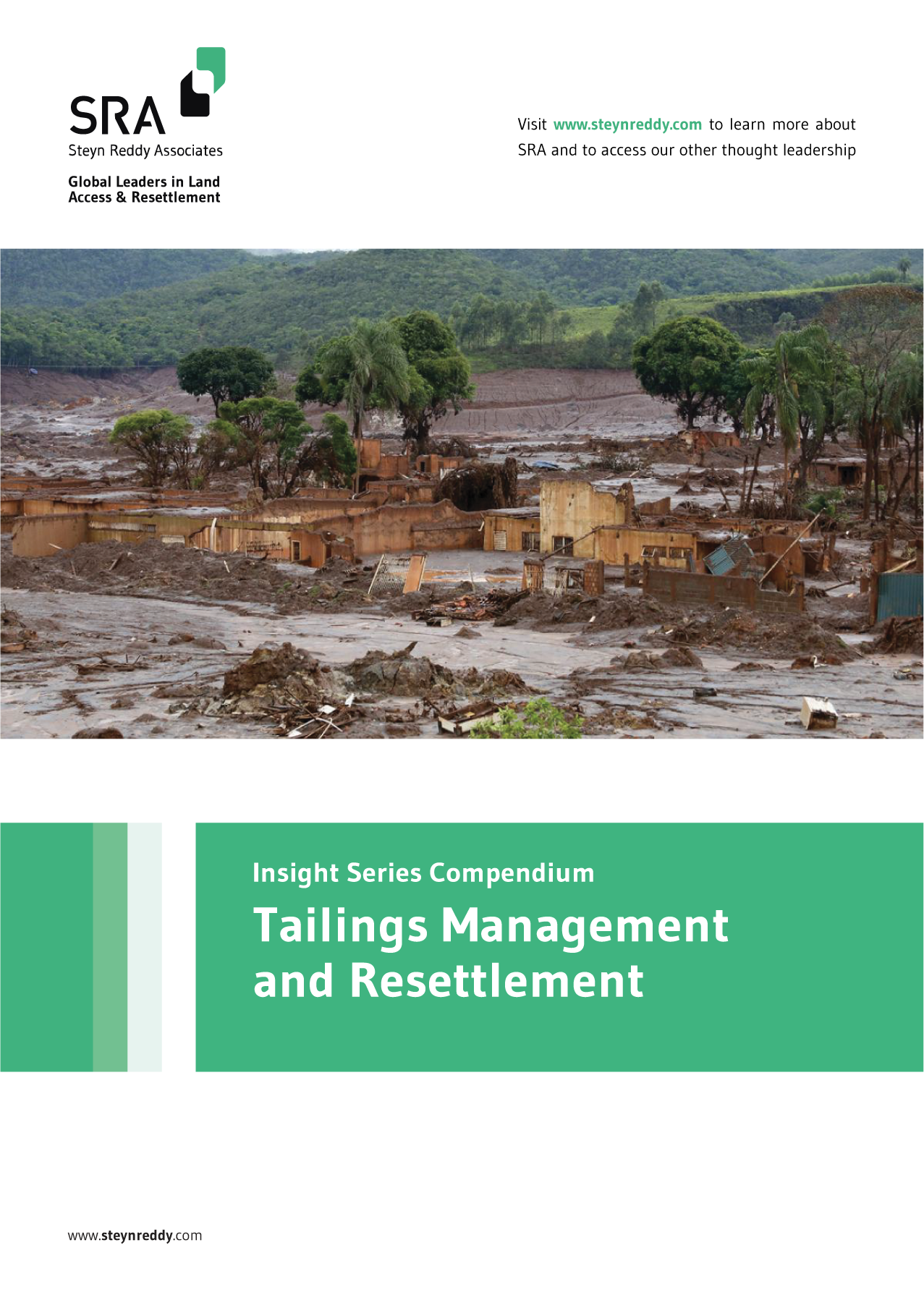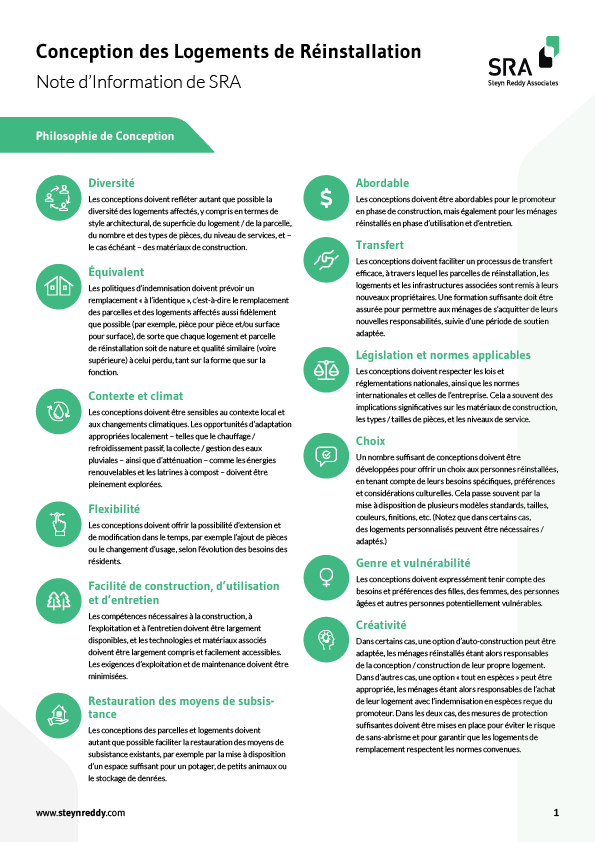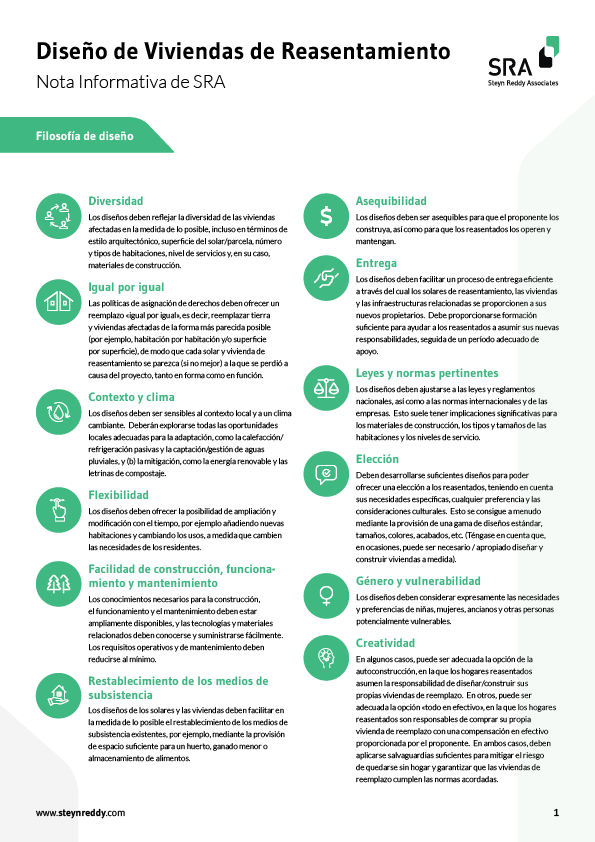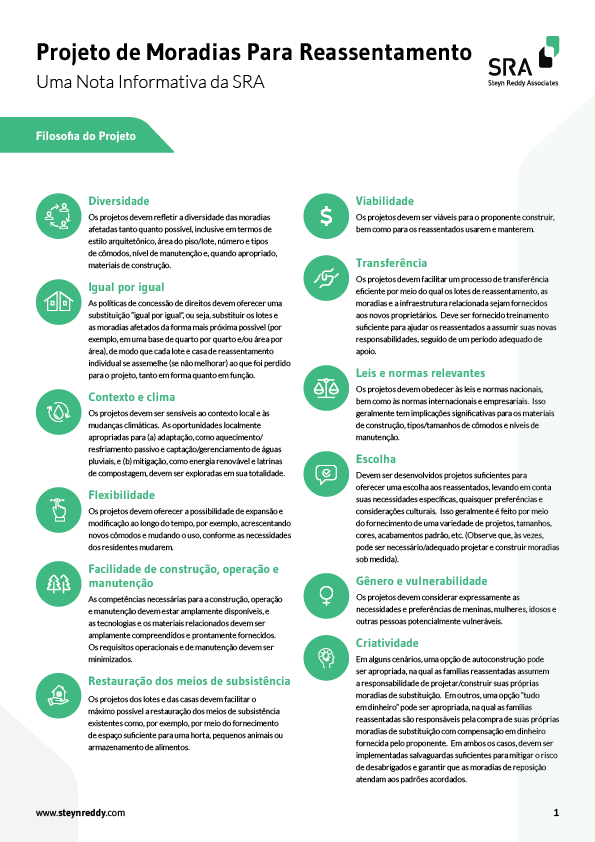Insight series compendium
Tailings Management and Resettlement (EN)
This Compendium consolidates a two-part Insight Series developed by SRA to help project proponents and mine owners, among others, understand how displacement impacts and resettlement can be properly considered and managed within the broader context of effectively assessing and managing the risks posed by tailing storage facilities on nearby communities, particularly those located downstream.

Overview
The disastrous failure of various tailings storage facilities in recent years, including most notably in Brazil, focused further attention on the risks faced by host communities living downstream of these large-scale structures. These risks include seepage that contaminates groundwater resources and a breach of the dam wall, which causes a rapid outflow of materials, which in turn can injure or kill people, inundate buildings, crops and other assets, and generate significant displacement impacts.
In 2019, the International Council on Mining and Metals (ICMM), the United Nations Environment Programme (UNEP) and the Principles for Responsible Investment (PRI) co-led a process to establish an international standard for tailings storage facility design, construction and operation. This process culminated in the creation of the Global Industry Standard on Tailings Management (the Standard), which was issued in August 2020. In sum, the Standard enjoins tailings storage facility operators to:
- Have zero tolerance for human fatalities and strive for zero harm to people and the environment throughout the entire lifecycle of their facilities
- Use specified measures to prevent catastrophic failure and implement best practices in the assessment, planning, design, construction, operation, maintenance, review, monitoring and closure of such facilities.
In the past, the resettlement of communities in the mining sector has typically taken place primarily in relation to accessing land required for projects to be developed or expanded (including the construction and expansion of tailings storage facilities). What the new Standard highlights is the need to more closely consider displacement impacts and the possibility of resettlement not just in the context of land access to enable projects to be developed or expanded, but also in situations where projects do not need land to construct and operate their facilities but where communities reside adjacent to, near or downstream of tailings storage facilities and are therefore exposed to the risks of facility failure.
SRA Insights
SRA is a recognised thought leader in the field of land access and resettlement.
We publish a popular and comprehensive Insight Series, as well as occasional Briefing Notes and journal articles on key topics.
Over the coming months, we will be releasing our complete library of thought leadership - in English, French, Spanish and Portuguese.
Check back regularly for new resources.



